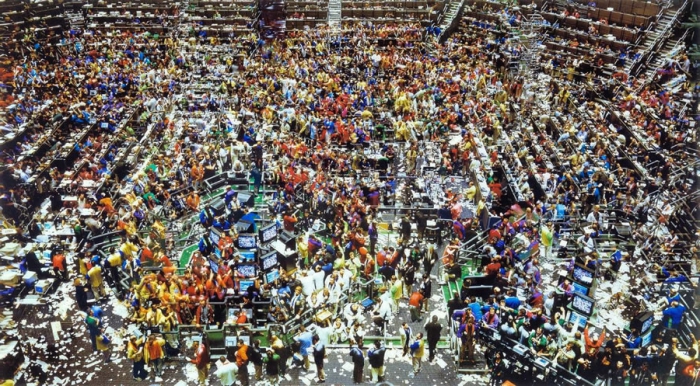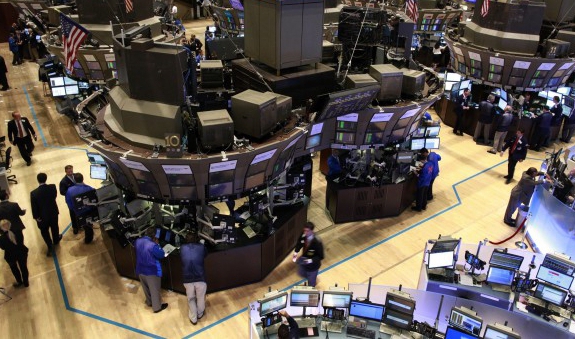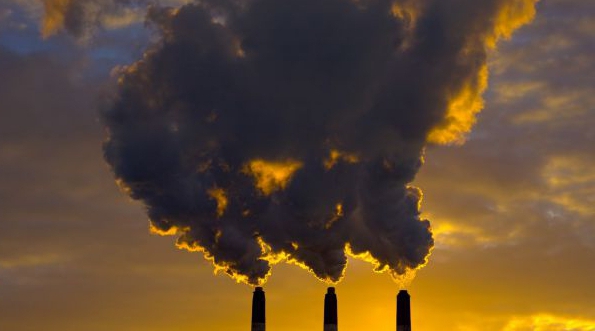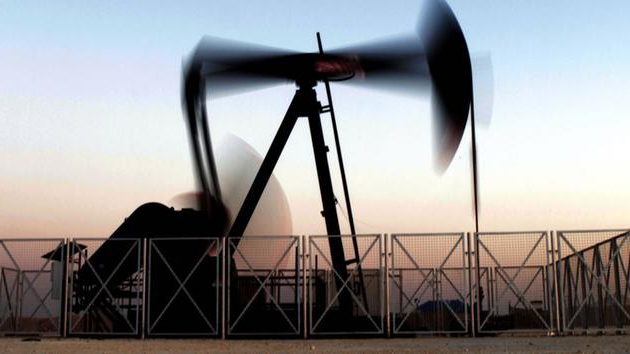The 21st century poses new challenges for the world community, which are expressed in the intensification of globalization processes. Moreover, globalization of world development is observed in all its fields: from economics and politics to ecology. The social economy has recently undergone major transformations in the world, including in Russia, causing an actual transition to the formation of a new concept of world and national development.
The process of globalization is quite complex and ambiguous, which greatly complicates the planning of rational internal and foreign policy in general, and the selection of areas of sustainable economic development. In these circumstances, the scientific understanding of the essence, driving forces, laws of economic development and the influence of the state on the world development of the economic system, the identification of the trajectories of the economy in the context of global socio-economic dynamics acquire important theoretical and practical significance.
Factors affecting the development of the Russian economy
The current stage of development is characterized by processes of reform and fundamental transformation in all spheres of life. The Russian economy is dynamic and generally not very resistant to external and internal influences. The peculiarities of the current system are that within its framework both new relations inherent in a market economy and old relations inherent in an administrative-command economy interact.
The types of economic systems of a given society are determined by the nature of basic economic institutions. To ensure a good pace of economic development, the concept of four “ands” stands out: investment, innovation, infrastructure, institutions.
The main value in this chain is acquired by the knowledge-based economic institute. Institutionalism is a qualitatively new direction in economic thought, the content of which consists in forecasting and analyzing effective economic institutions. It includes two aspects: customs, norms of behavior in society and the consolidation of customs and norms in the form of institutions, organizations, laws. The idea of an institutional approach is not to dwell only on the analysis of the economic process, but to use the institute of economics in the analysis and take into account factors of the external economy.

In modern conditions, objectively related to market relations, the importance and role of the regional economy and management has increased. Almost all the difficulties that arise during the reform process are associated with the influence of various local factors and conditions. Regional management of economic systems as a type of special management is a combination of means, methods, principles and forms of influence on the economic work of the region. The direct objects of local administration are organizations and companies related to the property of the constituent entities of the Federation, as well as infrastructure units whose activities are focused on the reproduction of citizens' activities outside the manufacturing sphere. The regional government has a direct impact on these facilities, and indirectly on all other facilities.
The social environment of the state has a significant impact on economic development.At present, in Russia, the need for a qualitatively new solution to social problems, for a deeper and closer integration of economic and social policies, optimization of methods and means of solving social, political and economic problems is becoming ever clearer and sharper. The modern social economy has the following goals:
- Economic freedom.
- Economic justice.
- Economic efficiency.
- Economic security.
- The economic growth.
- Means of coordination of actions of economic entities among themselves.
Models and types of economic systems
Within the framework of a particular economic system, there are various models of economic development of individual states and regions. According to the criteria of the country's role in solving socio-economic problems, the redistribution of wealth and income, and poverty eradication, the following models of economic systems can be distinguished:
- liberal oriented;
- socially oriented.
Liberal-oriented models are based on the postulate human freedom the judgment that individual individual freedoms form the legal basis of the economic order and society, and the state should at least fulfill the functions of protection.
In contrast to liberal, socially oriented models of economic systems are based on the notion that not every individual in itself, but a country should take responsibility for the well-being of people. The state should guarantee citizens a decent standard of living and a set of social benefits: the opportunity to get an education, housing, pensions, employment, etc.
| Types of Economic Systems | Principles |
| Traditional | 1. The natural division of labor.
2. Heredity in the choice of occupations. 3. Traditional production methods. 4. Backward technology. 5. Handwork. 6. Non-recognition of innovation. 7. Subsistence farming. |
| Team | 1. Centralism.
2. Planning. 3. The hierarchy. 4. Leveling. 5. State ownership of resources. |
| Market | 1. Economic freedom.
2. Competition. 3. Self-regulation. 4. Private property. 5. Self-interest of an economic entity. 6. Non-intervention by the state. 7. Continuous scientific and technical progress. |
| Mixed | 1. Economic freedom.
2. Competition. 3. Self-regulation. 4. Government intervention. 5. The fight against monopolies. 6. Protection of competition. 7. Stimulating technology and organizational innovation. |
| Transitional | 1. The formation of the private sector.
2. Privatization. 3. The formation of market infrastructure. 4. Pricing reform. |
Traditional economic system
This system has existed for a fairly long time for the development of mankind. Her characteristic features:
- Collective ownership of the means of production of the entire community.
- The use of hand tools.
- The dominance of the natural system of economy.
- Next generations make the same economic decisions as past generations.
- The economy is dominated by customs, traditions that pass from generation to generation.
- Low labor productivity, conservatism in the development of production.
Market economic system
This system grows out of the system of commodity production at that stage when it is of a general nature, and completely displaces subsistence farming. The market system is the basis of the economic system of all developed countries world, which speaks of its high efficiency. Its main features:
- A variety of forms and types of property, the leading of which is private property.
- Freedom of competition between producers for consumers, which encourages firms to constantly improve product quality, reduce resource costs, and quickly use the latest achievements of research in production.
- Freedom of pricing when prices are freely set in the market.
- Freedom of entrepreneurship, an opportunity for everyone to open their own business.
- The economic responsibility of entrepreneurs for the results of their activities. Each businessman pays for the negative consequences of decisions made by his capital, and sometimes by his property.
- A market economy is a self-regulatory economic system, since the market provides manufacturers with information about the need to increase the production of some goods and services or reduce the production of others, which leads to the automatic redistribution of resources.

Thus, a market economy has many advantages. At the same time, it is not ideal, and like all other types of economic systems, it has its drawbacks:
- In a market economy there is a social stratification of the population into rich and poor.
- In a market economy, there is no social assistance for people with low incomes, unemployed, disabled people, single people.
- The mechanism of competition sometimes leads to the formation of monopolies.
Team Economic System
Sellers try to produce high-quality goods, reducing production costs, which allows them to sell products at lower prices. Society's dreams of social justice led to reforms and revolutions. The October Revolution of 1917 in the Russian Empire changed the political system, thereby changing the basic economic systems operating in the country. Key features of the team economy:
- State ownership of all means of production, land, its bowels, objects of socio-cultural sphere.
- Most economic decisions are made by the state and its central bodies.
- Inefficient use limited resources high level of material and capital intensity of products.
- Lack of competition, which leads to a low level of labor productivity and product quality.
- Lack of economic interest of enterprises in using the latest achievements of scientific and technological revolution.
- State support to enterprises for the full sale of products at any price.
- The team economy is built on the principles of brutal centralism, comprehensive planning. It does not ensure the economic freedom of producers, their independence in making economic decisions.
- In the command economy, the principle of egalitarianism is applied, which leads to the loss of incentives for highly productive labor and inefficient use of labor resources.
- A team economy is a scarce economy in which most resources are used to produce industrial goods, and the share of consumer goods in total production is very low.

In addition, state regulation of prices leads to a constant excess of demand for consumer goods, and also creates their scarcity. From the standpoint of the law of limited resources, a command economy is an ineffective, unreasonable, irrational economic system that can exist as long as it has the ability to obtain fairly cheap labor and natural resources. At the same time, many recall it with nostalgia, forgetting about the shortcomings, but well remembering the advantages that other types of economic systems do not have. These include:
- State support of the minimum level of satisfaction of needs in education and healthcare, confidence in the future, the possibility of timely receipt of wages, pensions and others.
- Lack of open inflation and unemployment.
- The ability of the state to concentrate huge funds on the solution of large projects (space programs, major highways, the development of the military industry).
Mixed economic system
The world economic crisis that unfolded in the world in 1929-1932 showed all the imperfection of the market system. The reaction to all the shortcomings of a market economy was the reorientation to other types of economic systems. In most countries of the world, the formation of a mixed economic system has begun, when the state takes on the following functions:
- Anti-crisis regulation of the economy.
- Credit and banking regulation and monetary system.
- Implementation of anti-inflationary policies.
- Carrying out an active social policy to assist the unemployed, low-income and disabled members of society.
- Creation of a free education and healthcare system.
- Creation of a large middle class.
- Antitrust policy.
- Creation of a used sector of the economy.
The study of the system of economic activity
The global shifts that the world and Russian economies are undergoing are highlighting the formation of a modern concept (paradigm, methodology) of economic research. Until recently, such a concept was a systematic approach, because world economic relations are a system whose structure includes subsystems of national economies. The systematic approach is the result of scientific and technological transformations and the result of the need to solve various problems using the same tools (methodology).
A comprehensive study of activities in the context of globalization should be based on the awareness of the objective process of integrating scientific knowledge. This, in turn, affects the interpretation of the categories of economic systems, as well as the understanding of the key principles of the market organization of economic activity of the state as the basis of the modern national system of economic activity. After all, before you trace and analyze the transformation, you must first determine the scientific category. In other words, it is impossible to propose the concept of sustainable development without answering the question of what the economic system (including the national) is as a category of modern economic theory.

The category "economic system" is widely used in modern economic science and other social sciences. However, in its interpretation there is no unity of views. This is due to many reasons, among which a significant role is played by the fact that the effectiveness of economic systems is underestimated in the development of civil society, excessive ideologization and politicization are carried out in their study, which impedes the process.
Also, the use of various approaches by various authors actually takes scientific discourse in different directions: from analyzing price, money and other issues to revealing the content, structure and dynamics of the economic systems of society (capitalist, socialist, post-socialist, etc.).
Thus, the economic system can only be described as a complex system. In the modern domestic economic theory, the categories “socio-economic system”, “national economy”, “ecological-economic system”, etc. are often used. At the same time, despite the lack of unanimity in the interpretation of the term “economic system”, it would be advisable to propose a look at this important methodological problem: the concept of an economic system is in a certain way an ordered structure of social and natural institutions that exists to achieve socio-economic goals for redstvom resource allocation, organization of production and distribution are established in the material and spiritual values, the system self-organization as a whole and its structural elements.
The structure of economic systems
To learn more about the concept of an economic system, it is necessary to identify its elemental structure.Being a complex structure that permeates all spheres of the life of society (after all, there is a distribution of resources and the production of vital goods), it has the following main components:
- society and its dominant values, which collectively affect relations within society;
- Wednesday
- political system and social management mechanism;
- legal system;
- actually economic mechanism (financial system, including tax, fiscal and budgetary policies, monetary system, motivational mechanism, foreign economic system, etc.).
All these elements are interconnected, and the removal or restriction of one of them leads to the destruction of the economic system itself.
Structural Levels of the Economic System
One of the defining characteristics of the economic system are various structural levels:
1st level: global;
2nd level: regional;
3rd level:
- local (local);
- situational;
- group;
- bilateral.
All levels together constitute the hierarchy of the structure of the system of economic relations. They are units of analysis of these relationships.

So, the first level - global - is determined at the level of the state as a whole and its foreign economic relations with other countries of the world.
The second level - regional - is the relationship between the national economic system and its structural elements (administrative units) and / or other national economic systems within the framework of a joint geographical region.
The third level - local - is determined by the participants and the characteristic of economic relations:
- Situational - individual economic situations with the participation of structural elements of economic relations (state, regions, institutions, organizations, entrepreneurs, individuals, etc.).
- Group (coalition) - a combination of the interests of individual structural units of the system to solve the problem at any level of the economic system.
- Bilateral - the interaction of two separate economic systems and structural elements of one system.
Given the above, it is possible to imagine the economic system of the state in the form of interconnected structural elements. The logic of this sequence corresponds to the principles and signs of the system: the presence of the simplest units, subsystems, components, a certain level of integrity, connections with the external environment.
Thus, the concept of an economic system can be defined - these are interconnected social and natural structural elements whose action is aimed at achieving a specific goal and which are surrounded by other systems.
The global economic system is the interconnected action of economic systems, international institutions (which can also act as economic systems) in order to achieve a specific goal.
Based on the proposed definitions, both the global economic system and other modern economic systems (political, cultural, natural, etc.) can act as the external environment, and other systems that exist in the world can act as the global external environment.
Globalization of the world economic system
Globalization is a long development process, within the framework of which there is a complication of the forms of the world economic system. Such a system organically complements the national level of economic life organization with a global - global one. Globalization in this context means:
- Strengthening the interaction of elements of the global economy is manifested in the growth of world trade, an increase in international capital flows, easing trade barriers between countries.
- Expanding markets and increasing competition.
- Achieving a more homogeneous economic space.
- Formation of global (supranational) leadership institutions.

That is, we can talk about the formation of globalization conditions for the development of economic systems. These conditions are:
- Improving the competitiveness of structural elements and liquidating or restructuring uncompetitive ones.
- Informatization and increasing the role of education and science in the development of the economic system.
- Internationalization and transnationalization of the economy.
The listed globalization conditions brought with them the new properties of national economic systems - the high dynamism of their development, linearity, and self-organization. Such new properties of systems gave rise to the appearance of new studies of the globalization impact on economic systems based on the theory of self-organization. Indeed, economic systems are complex nonlinear systems, and the approach to their research, as to simple ones, does not justify itself.
The evolution of economic systems
Among modern methods of studying economic systems, an important place is rightfully occupied by the evolutionary method and the synergetic approach. The main prerequisites for the evolutionary approach are as follows:
- Economics is an open system that is evolving.
- Time is the most important parameter of the functioning of the system.
- The stability of economic systems depends on the degree of homogeneity of the tageterogeneity of institutional units - excessive internal differentiation or complete homogeneity causes an increase in entropy and chaos.

One can agree with some of the premises of the evolutionary theory of economic systems, while noting that evolution itself is a process of transition from one form to another. Thus, supporters of evolutionary theory immediately note the openness of the economic system, although its previous form is closed. And if we talk about evolution, then from a closed form, it moved to an open one. And this is the first and only form of evolution of economic systems. After all, the transition from industrial development to post-industrial development is a process of developing an already open system. At the same time, if the types of economic systems have changed from command-administrative to market, then this can be called the evolution of the economic system - the transition from partially closed (closed) to open.








